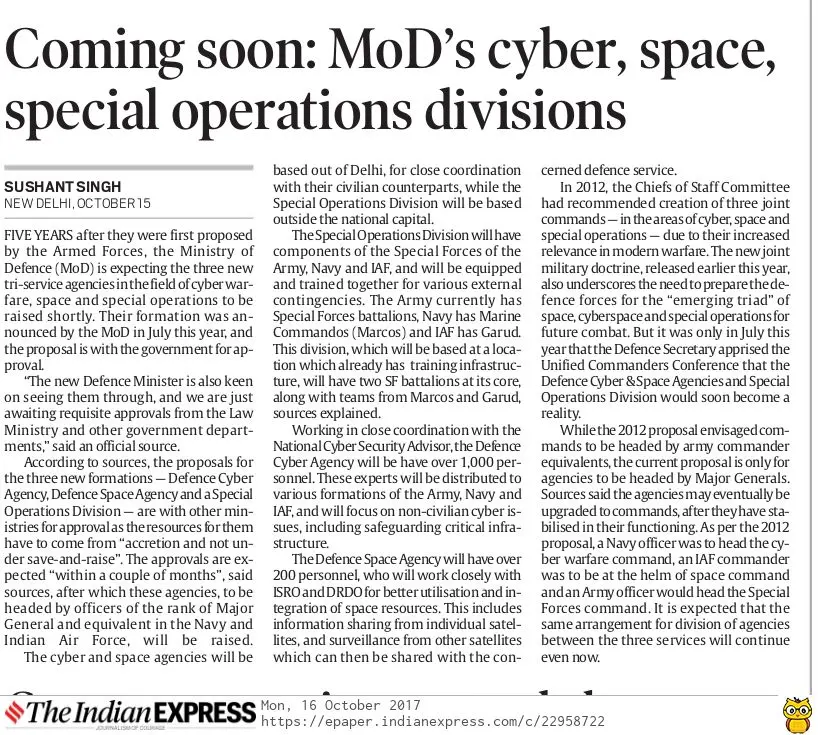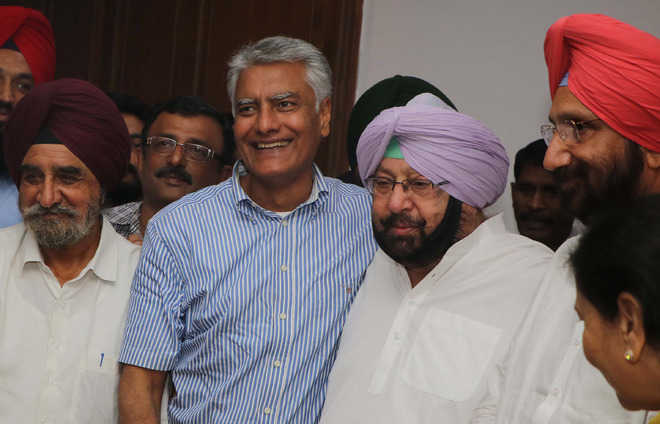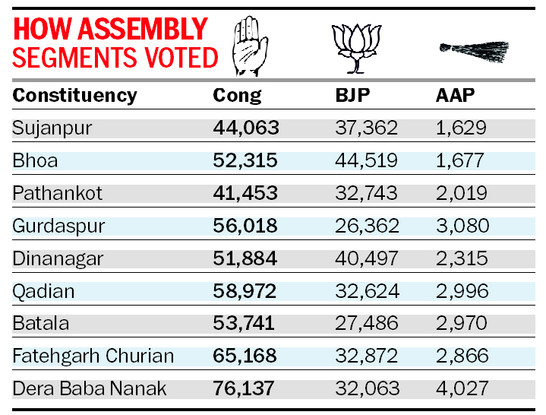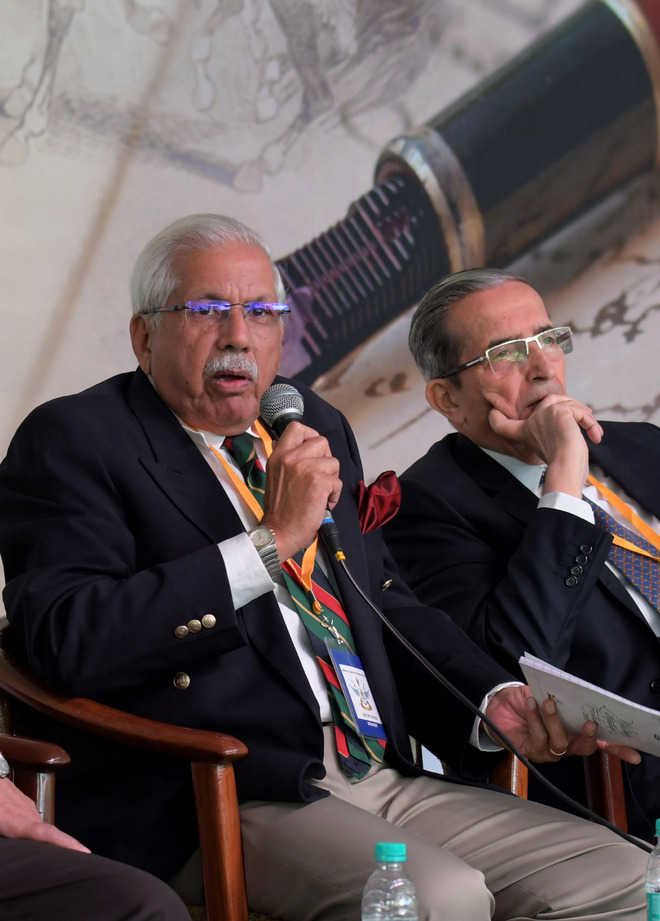
(Left) Lt Gen Mahinder Puri (retd) and Air Marshal Vinod Patney (retd) at the Military Literature Festival in Chandigarh on Friday. RAVI KUMAR


In militancy and counter-insurgency, there are no victors and losers. For a successful insurgency like that led by Mao Zedong (Chinese Marxist theorist), you need sanctuary. In Kashmir’s insurgency, sanctuary was in Pakistan and reasons were economic.” Lt Gen TS Shergill (retd)

When someone asked Winston Churchill how history would judge you, he replied I will write history. He wrote six volumes on World War-II. His contemporaries did not survive to tell their story. Benito Mussolini was executed in 1945, Adolf Hitler committed suicide in 1945, Joseph Stalin died in 1953 and Franklin D Roosevelt died in 1945.” Thomas Fraser, Military Historian

Churchill had hardly devoted any page to Indian Army. Battles of Kohima and Imphal were ignored.” Alan Jefferys, Historian

“History is written by winners, so it is difficult to get more than one perspective. Had Stalin written down his thoughts, the outcome would have been different.” Ed Haynes, Historian
Ajay Banerjee
Tribune News Service
Chandigarh, December 7
More than 18 years after India and Pakistan fought a war on the icy heights of Kargil, two officers of the Army and Indian Air Force (IAF) who led the respective operations shared a stage at the Military Literature Festival here today recollecting their first-hand experiences.Speaking about the war in 1999, Lt Gen Mahinder Puri (retd), who was then a Maj General commanding the 8 Mountain Division tasked with securing Kargil, recollected: “I told General Malik (VP Malik, then Army Chief) ‘don’t set a timeline to evict the intrusions and be ready for casualties’.”“The country and military were taken by surprise at the intrusion in Kargil,” he asserted while talking about the war fought along the 168-km Himalayan ridgeline that forms the Mushkoh-Drass-Kargil-Batalik-Turtuk axis along the LoC.Air Marshal Vinod Patney (retd), who was then the chief of the IAF’s Western Air Command (Kargil is its part), recollected how fighter jets were not designed to launch an attack at those heights (17,000-18,000 feet). “It was the afternoon of May 26 that the Chief (AY Tipnis) called up and said be ready. But then, he said, don’t cross the LoC,” recollected Air Marshal Patney.“A small error could mean the bomb would fall on the other side of the ridgeline that would be miles away. It was the time that laser-guided bombs were used.Lt Gen Puri said the plan by (General Parvez) Musharraf, the then Pak army chief, was to alter the Line of Control (LoC). “He had a brilliant plan but could not visualise its end.” General Musharraf in his book ‘In the Line of Fire’ writes how “800 sq km of area was captured… and it created strategic effects”.Lt Gen SH Kulkarni (retd) said: “We still need answers. Why did Kargil war come on us? Have we acted on Kargil Review Committee? or Was not allowing forces across the LoC a right idea?” This is a very little historical analysis of the war, he said.
“In militancy and counter-insurgency, there are no victors and losers. For a successful insurgency like that led by Mao Zedong (Chinese Marxist theorist), you need sanctuary. In Kashmir’s insurgency, sanctuary was in Pakistan and reasons were economic.” — Lt Gen TS Shergill (retd)“When someone asked Winston Churchill how history would judge you, he replied I will write history. He wrote six volumes on World War-II. His contemporaries did not survive to tell their story. Benito Mussolini was executed in 1945, Adolf Hitler committed suicide in 1945, Joseph Stalin died in 1953 and Franklin D Roosevelt died in 1945.” — Thomas Fraser, military historian“Churchill had hardly devoted any page to Indian Army. Battles of Kohima and Imphal were ignored.” — Alan Jefferys, historian“History is written by winners, so it is difficult to get more than one perspective. Had Stalin written down his thoughts, the outcome would have been different.” — Ed Haynes, historian





















































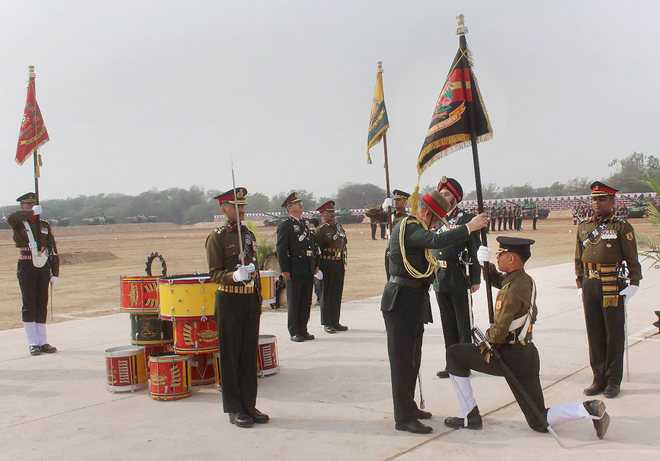


 HT PHOTO
HT PHOTO
